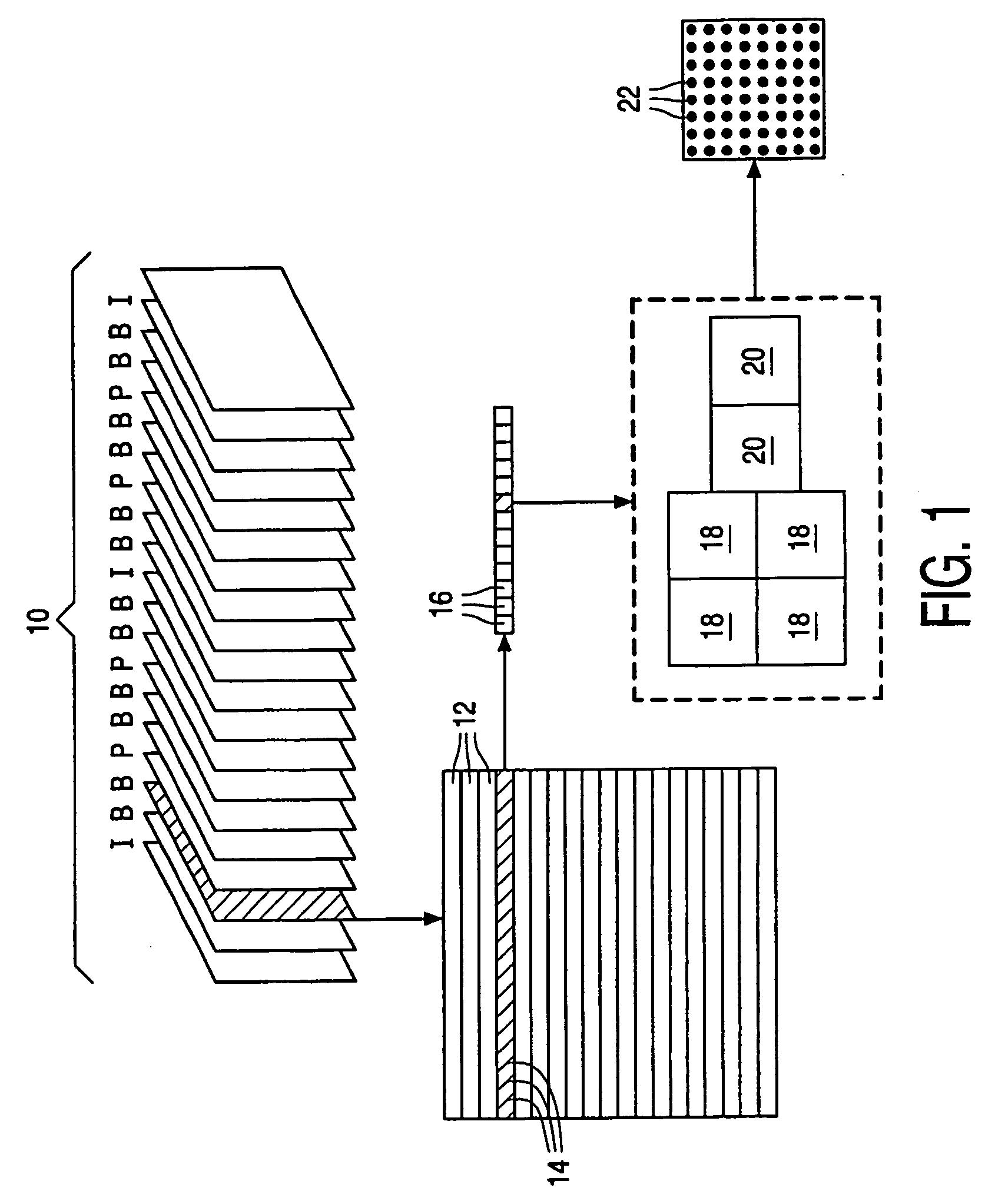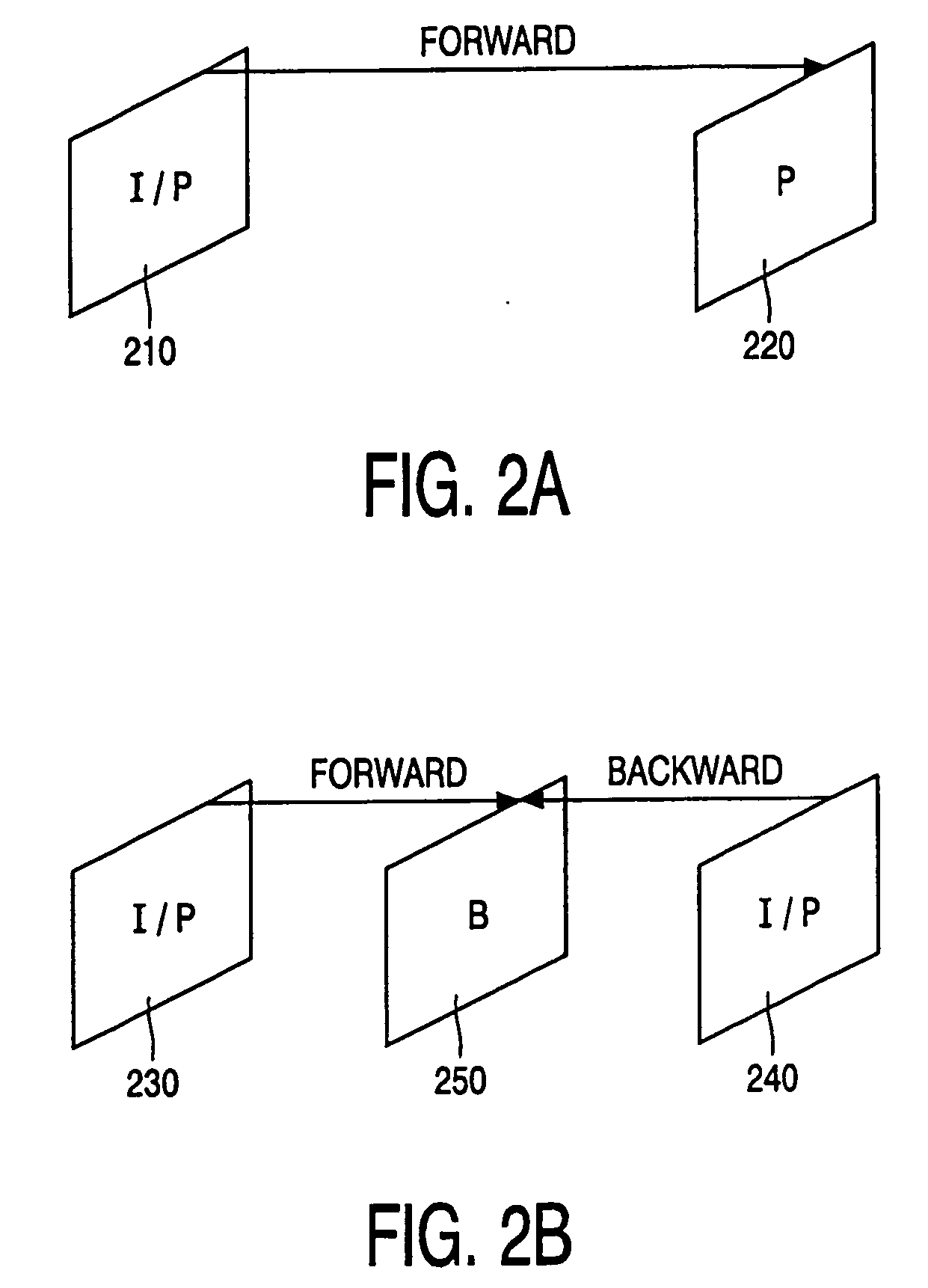Editing of encoded a/v sequences
a coded audio and video sequence technology, applied in the field of frame-based coded audio/video (a/v) data editing, can solve problems such as the increase of the frame size, and achieve the effect of high computational cos
- Summary
- Abstract
- Description
- Claims
- Application Information
AI Technical Summary
Benefits of technology
Problems solved by technology
Method used
Image
Examples
Embodiment Construction
[0030]FIG. 3A shows an exemplary sequence of frames according to the MPEG-2 coding. Although the following description will focus on this coding, persons skilled in the art will recognize the applicability of the present invention to other A / V coding standards. FIG. 3A also shows the dependencies between the frames. Caused by the forward dependencies of the B-frames, transmitting the frames in the sequence as shown in FIG. 3A would have the effect that a received B-frame can only be decoded after the subsequent reference frame has been received (and decoded). To avoid having to ‘jump’ through the sequence during the decoding, frames are usually not stored or transmitted in the display sequence of FIG. 3A but in a corresponding transmission sequence as shown in FIG. 3B. In the transmission sequence, reference frames are transmitted before the B-frames that depend on them. This implies that the frames can be decoded in the sequence in which they are received. It will be appreciated th...
PUM
| Property | Measurement | Unit |
|---|---|---|
| length | aaaaa | aaaaa |
| color | aaaaa | aaaaa |
| luminance | aaaaa | aaaaa |
Abstract
Description
Claims
Application Information
 Login to view more
Login to view more - R&D Engineer
- R&D Manager
- IP Professional
- Industry Leading Data Capabilities
- Powerful AI technology
- Patent DNA Extraction
Browse by: Latest US Patents, China's latest patents, Technical Efficacy Thesaurus, Application Domain, Technology Topic.
© 2024 PatSnap. All rights reserved.Legal|Privacy policy|Modern Slavery Act Transparency Statement|Sitemap



